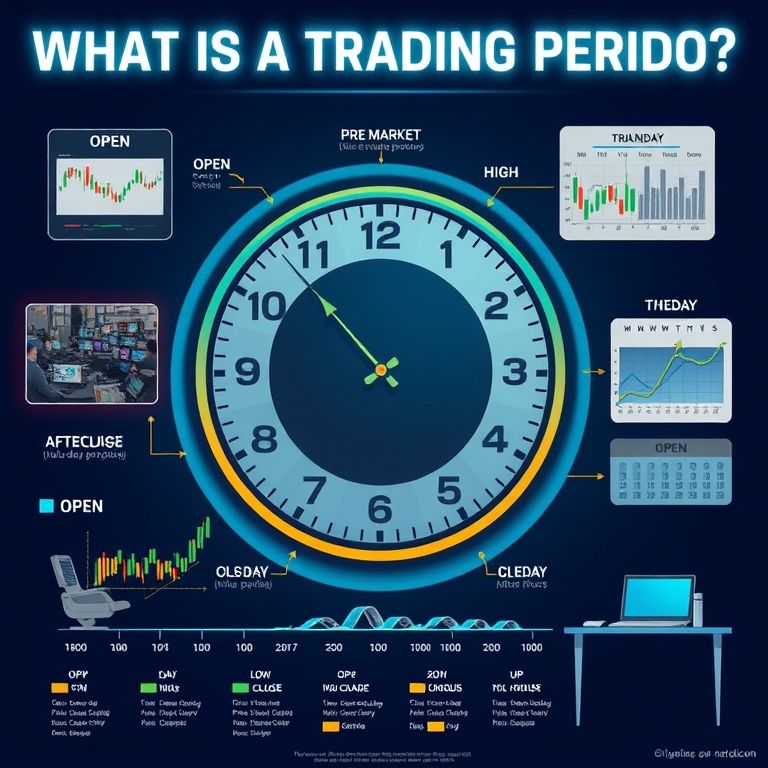what is a trading period
What is a Trading Period? Timeframes that Power Your Web3 Trading
Introduction
Picture this: you’re sipping coffee, watching a crypto chart flicker with tiny candles. One moment you’re thinking short bursts, the next you’re planning a longer view. The rhythm behind every trade isn’t just price moves—it’s the trading period. In web3 finance, the period you choose shapes data granularity, risk, and even which strategies feel comfortable. Get the timing right, and your decisions feel less like guesswork and more like calibrated moves.

What exactly is a trading period?
A trading period is the fixed span used to collect price data, place orders, and settle trades. It’s the interval that determines candle density on charts (for example 1-minute, 5-minute, 1-hour, or daily) and, in many venues, the cadence at which positions are marked to market or settled. Short periods reveal fast price action; longer periods smooth out noise and show trends. In DeFi and on-chain systems, periods can also govern how often a protocol rebalances, reprices liquidity, or updates oracle data.
Timeframes across asset classes
- Forex and spot indices: liquid and active, with traders often toggling between 5-minute and 1-hour charts for intraday moves, while daily candles guide longer plays.
- Stocks: daily or 4-hour candles are common for swing trading; pre/post-market sessions can add another layer of nuance.
- Crypto: markets move fast, so 1-minute to 15-minute charts are popular for short-term timing; daily frames fit longer, trend-following bets.
- Commodities and futures: periods align with contract cycles and settlement daily or per contract, which matters for carry and rollover decisions.
- Options: time-to-expiration and implied volatility dominate, so traders think in terms of weeks and days rather than purely price candles.
- Indices: mix of equities and macro exposure; timeframe choice balances breadth vs. specificity.
Why the trading period matters
- Data fidelity vs. noise: short periods catch momentum but invite false signals; longer periods reduce noise but may miss fast moves.
- Backtesting reliability: the period you test with should reflect your real-time intent; misaligned backtests overstate performance.
- Execution and slippage: tighter periods can exaggerate slippage in thin markets; in thriving markets, the effect shrinks, but you still pay attention to liquidity.
- Strategy alignment: some tactics (scalping, day trading) demand short horizons; trend-following and swing strategies benefit from longer frames.
Reliability, leverage, and practical tips
- Be careful with leverage: high leverage on short periods can magnify both gains and losses. Approach with clear risk bounds—for example, cap risk per trade and use stop levels that respect your time horizon.
- Position sizing across periods: adjust exposure by the period you’re trading. Short-term bets may require tighter stop ranges; longer bets may tolerate wider ranges but demand stronger conviction.
- Risk controls: diversify timeframes across assets, use limit orders to reduce slippage, and keep an emergency exit plan ready.
Tools, security, and analysis
- Charting and data: combine TradingView-style charts for familiar indicators with on-chain analytics (address activity, open interest, funding rates) to corroborate price signals.
- DeFi realities: decentralized venues offer fascinating liquidity, but watch for MEV risk, smart-contract bugs, and gas costs. Audited contracts, diversified lenders, and robust custody are your friends.
- Chart analysis: moving averages, RSI, MACD, volume patterns, and support/resistance lines work across timeframes, but what matters is how you interpret them in the order flow and liquidity context.
Decentralized finance today: progress and challenges
DeFi has democratized access, but fragmentation and regulatory uncertainty persist. Liquidity depth varies by pool and chain, front-running remains a concern, and oracle reliability matters more than ever when your period relies on timely data. The upside is programmable liquidity, permissionless access, and rapid iteration of trading strategies—if you pair it with solid security practices and risk discipline.
Future trends: smart contracts, AI, and smarter periods
Expect smarter, more adaptive trading periods driven by on-chain data streams and AI-assisted signals. Smart contracts will automate risk checks and liquidity management, while AI can surface cross-asset patterns that human traders might miss. Cross-chain liquidity solutions could make period choice more flexible, letting you blend on-chain and off-chain data to optimize timing. The promise: faster, more precise execution with better risk controls—without sacrificing transparency.
A quick guide to choosing your period
- Align with your goal: quick scalp? choose shorter frames. building a thesis? longer periods help confirm trend.
- Check liquidity: thin markets punish tight periods with slippage.
- Test across assets: a period that works for crypto may not suit commodities; calibrate expectations accordingly.
- Pair with risk rules: define stop losses, position sizes, and maximum drawdown in alignment with the period.
Slogan to remember
Trade with the right period, harness the rhythm of markets, and trade smarter, not harder.
If you’re looking to level up, seek a platform that blends flexible timeframes, secure custody, and charting analytics with on-chain data. The right trading period doesn’t just tell you when to act—it guides you toward smarter decisions, safer leverage, and a path to growing confidence in both traditional and decentralized markets.
YOU MAY ALSO LIKE